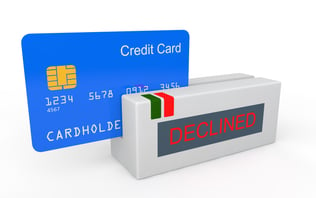 False positive transactions or false declines can really hurt a small business. Let's take a look at what merchants need to be watching out for.
False positive transactions or false declines can really hurt a small business. Let's take a look at what merchants need to be watching out for.
Online stores engage in a constant battle against fraud. Make the rules too tight, and you insult good customers by declining their purchases. Make the rules too loose, and you lose money to fraudsters.
It’s a challenge because while you can easily measure fraud, it’s less easy to see the numbers for false-positive transactions. But those can cost you up to 75 times more than identifiable fraud would. It’s not just the loss of that sale, though, but also the potential loss of the customer insulted by being declined.
What should you keep an eye on to help you figure out if your false-positive numbers are too high? Let’s take a look at false positives and how to measure them.
What Is a False Positive?
False positives or false declines are transactions that trigger your fraud detection system even when there’s no fraud happening. They happen more often with online transactions since those are considered Card Not Present, which shifts liability for charges to the merchant.
It can lead to loss of revenue and a diminished customer experience. Turning down legitimate purchases erodes customer trust and hurts your company's reputation.
How to Measure False Positive Rates
More than 40 percent of online merchants don’t know how many false positives they have. You can’t improve what you can’t measure, so it’s important to calculate your rate.
It’s not a simple process to figure this out manually. You have to let through a certain number of transactions regardless of what your fraud system tells you. Later, you go back to figure out how many that were originally tagged as fraud turned out to be just that.
Experimenting takes time, but getting a baseline rate lets you determine if you’re improving as you tweak your fraud identification system. A good transaction platform can let you run multiple experiments at once to get to your baseline quickly.
How to Reduce Your False Positive Rate
False declines can cost you about 3 percent of your revenue — a significant profit leak. It’s important to pull as much data as you can from all your systems to help you figure out a better picture for identifying likely fraud.
A few numbers to watch include the below list. Keep in mind that you should be considering these together to find patterns and not each KPI in isolation.
- Fraud rate
- Incoming pressure - attempted transactions that are fraud
- Final approval rate
- Precision - percentage of fraud out of number of declines
- Decline rate
- Good user approval rate - percentage of good transactions out of total approved transactions
It’s a lot to keep track of, not to mention determining how to tweak your rules to influence them in the direction you want to go. This is where tapping into tech options like machine learning and artificial intelligence (AI) can help you by allowing you to use less absolute rules in your detection. Combining machine learning with rule-based logic gives you a more accurate risk score for transactions.
Refine Your Fraud Detection
Many people shop online because it’s so convenient, so you want to make that sale happen with as little friction as possible. While you will not get rid of every false positive, refining the rules and incorporating AI tech can reduce their number and allow valid orders through.
Need more information on false positives and fraud detection?
Request a demo of our transaction platform that uses machine learning to better identify legitimate sales.
.png)
.png)
%20(1).png)


